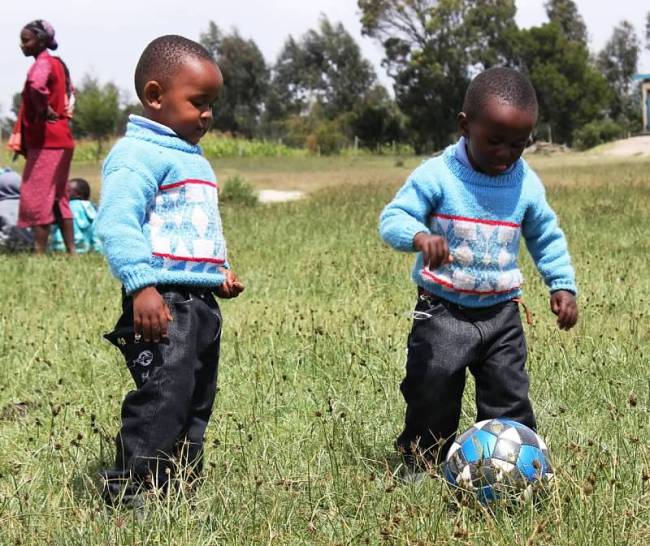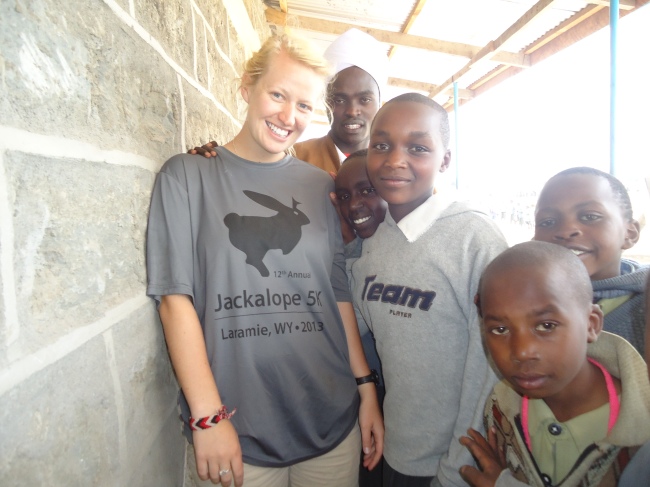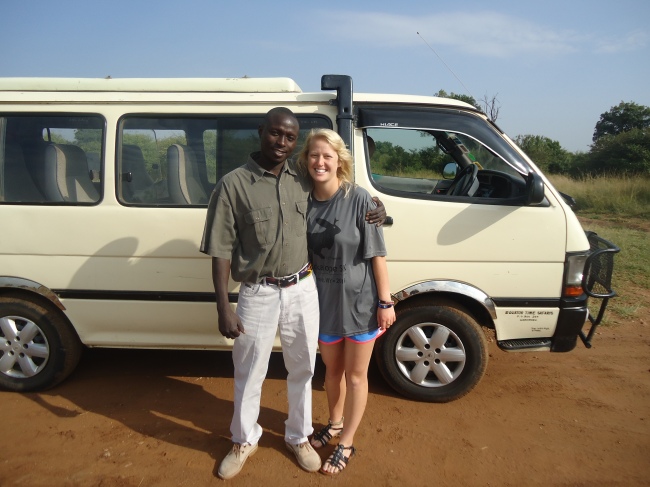Never in my life have I felt more butt naked than when I went to a club in Nairobi’s City Center on my second to last night in the beautiful country of Kenya.
I made sure I was fully clothed when I left the Nairobi Safari Club, and even took special care as we had been briefed about the cultural norms associated with dress. (My professor, Dr. K, has the connects in Kenya and we got a special lecture from one of his good friends who is an extremely distinguished professor at the University of Nairobi. You can read his article about the cultural expression of dress here http://africa.peacelink.org/wajibu/articles/art_4486.html). In short, I knew that in my culture, showing legs was fine, although the female top half must be covered. American females wear clothes that reveal most of their legs, all the way up to the upper thigh even, and it is pretty widely accepted, while exposing too much of the top half in general society is usually seen as inappropriate. In Kenya, showing any part of the leg above the knee is considered inappropriate, while the top half of the body is pretty much fair game. KNOWING THIS, I played it safe and wore a floor length brown maxi skirt and a dark green t-shirt knotted at the side (Safari-esque—I know.) Our driver, Patrick–and I cant even call him our driver because he was so much more than that, and now I consider him to be a very dear friend–picked up myself and someone else from our group, Mina. I was thrilled when he told me my outfit was very appropriate and that I would fit right in at the club. He could not have been more WRONG, but not because of any of the items I was wearing…
I am fully aware that I dance like a crazy person. My style has been honed by dancing to Pretty Lights (if you don’t know, you need to know…download some funky beats at PrettyLightsMusic.com) I dance all the time—but that doesn’t mean my moves are in away way, shape or form acceptable. The best way to describe my style is “I go hard.” I am aware that I probably attract some attention, but the attention I was getting at this club, called The Flamingo, was outrageous. Every time an upbeat song came on, (the music was mostly American Top 40 with some African or reggae beats) everyone made their way to the dance floor. After a few shots of Smirnoff and a beer, I had the courage to display my quirky moves. Lost in a Kenyan Call Me Maybe remix, I stayed toward the outside of the dance floor to minimize the attention being drawn to me. Before long, I was literally the only one dancing because all the dancers were standing on the periphery of the dance floor, watching me. When I asked where the bathroom was, Patrick told me he’d take me and grasped my hand firmly before waiting outside the bathroom for me and holding my hand on the way back. Patrick and Mina laughed jokingly: “If we don’t be careful someone is going to steal you Christine!”
I feel like you must have known this was coming. Being a Caucasian travelling in Africa, The Race Issue was always lurking somewhere barely out of sight. Race is kind of a big deal in America. We elected our first-ever black president in 2008 to a pretty polarized split reaction. Certain individuals are pulled over by police officers while driving simply because of the color of their skin. Should I even mention the socioeconomic inequalities distinguished by race? To this day, race is a topic at the top of the “controversial, heated and oftentimes hostile” list of class discussion topics that you DO NOT MENTION (up there with abortion, gun control, death penalty etc). Whether we believe we crossed that bridge in the 60s or not, we are still very much not over the bridge—still arguing about who owns the bridge, the water flowing under it, the type of wood, or some other inconsequential characteristic. Although I hadn’t thought about it before, I imagined race would definitely be a bridge to be crossed in Kenya. I suppose it kind of was, but not in the way I thought it would be. Don’t get me wrong, it has nothing to the effect of the use of words like “abortion” or “gay marriage,” but it’s definitely worth mentioning. I have even found myself wishing I didn’t say the word “black” around African Americans in conversation sometimes. Oh and don’t worry I’m not racist—my best friend is black. (HA HA) At any rate, I expected to be confronted by racial constructs in being American and in being white, and most importantly being a white American. But alas–Kenya and its people surprised me again!
Being white in a country where only 1% is non-African, a demographic shared by European, Arab or Asian inhabitants, means you stick out worse than a sore thumb. You stick out like an Easter bunny in Antarctica. And when you have a Scandinavian complexion and your hair is getting lighter by the day because of the sub-saharan sun, you are the focal point of the bunny herd. I vaguely remember being warned about something like this by Dr. K, however my shock wasn’t absorbed when we were bombarded by dropped jaws and 180 degree head turns, eyes following our van, squinting through the windows to gaze at the white people, the mzungu as we are referred to in Swahili. In rural Kenya, children literally stopped in their tracks and sometimes dropped buckets or hands of siblings to watch us drive past. What I soon realized, however, is that it wasn’t because we were presumed Privileged White Americans, or white humans in any negative sense of the word. We were a spectacle for these people because we literally WERE a spectacle–many of these people and all the children had never seen a real live white person before, let alone been spoken to by one or touched by one. We weren’t different because we were “worse” than them, we were just plain different, from everything they knew or had seen. Foreign, unknown, completely alien. Humans still, yes. But that hair! Those eye colors! The children were even fascinated by the shiny blond hair on my arms! They were in awe of my freckles. At the primary school in Hillside, I was swarmed by a gentle mosh pit of students of all ages, and after seeing them eyeing my ponytail dumbfounded, I took it out and said they could touch my hair. The students literally lost it. Two adorable twin boys (pictured below) experienced such intense sensory overload when touching the hair of two of my very good friends, Julie and Cate, that they could handle no more, burst into tears, and ran to the safety of their mother. If there was a negative connotation to the word white, I couldn’t hear it in anyone’s voice. White was nothing but an adjective—the same as the green fence or the gray building, it wasn’t good or bad, just different–wholly and unequivocally different!
This realization reminds me of something that another project participant said. Kathy, my professor’s daughter (also known as: future president of the United States) brought something up in one of our many highly intellectual and enlightening group conversations. What she said made me connect my own dots and I came up with this. Draw a Pictionary drawing of the word “discrimination” in your head: did it coincide with something along the lines of this definition: “the unjust or prejudicial treatment of different categories of people or things, especially on the grounds of race, age, or sex.” Oftentimes we forget what the verb “to discriminate” means: “to recognize and understand the difference between one thing and another.” The verb to discriminate, then, is a vital evolutionary mechanism that humans must use every single day, several times a day. When we were hunters and gatherers in the Great Rift Valley (also in Kenya, evidence was found here of the first humans to ever walk the Earth), humans had to discriminate between the poisonous mushrooms and the edible ones, or else risk poisoning themselves. Discriminating between two items is necessary—as humans we unconsciously and automatically process our experiences by splitting them up and then regrouping them based on common characteristics. Discriminating against them is not—an experience doesn’t have a meaning until we assign it a meaning. It’s easy to assign negative meaning to an experience or person that could bring about a negative consequence. Just because the mushrooms are poisonous, doesn’t mean they are evil, and doesn’t mean they should be treated like they are evil or murderous. Additionally, you are throwing out the mushroom because of its biological qualities that it has no control over. It is an individual’s CHOICE to decide that something is evil, or wrong, or bad. Humans do not have a choice in discriminating between items with different characteristics. We need to be conscientious about the way we are processing our experiences so that we are acknowledging, accepting and respecting these differences, but not assigning strong negative significance to things that are new and different. “Racially conscious” is a term that I hadn’t heard before I was seeking out information about The Race Issue in the United States. It’s an interesting concept and something that we should all be striving to be in our increasingly global social and economic environment.
I suppose what I’m trying to say is, not acknowledging or accepting that someone is different from you, whether its the way they dance, their skin color, their accent, their learning abilities, what have you, is discounting those qualities (both positive and negative) that conglomerate to make them the human they are. Not discriminating the differences between race, ethnicity, culture and language is not acceptable; however, discriminating against individuals with different qualities than you inhibits understanding, is paradigm shrinking, is downright hurtful, and usually leads to other more destructive behavior, like prejudice, hostility and persecution. Although we have fallen into the cycle of discriminating against instead of between, it isn’t too late! We can train our automatic processes not to assign subordinate meanings to things or people that are different from us by simply acknowledging and respecting these differences. Conceding that your skin is white and your peers’ is black is step one. Step two is consciously deciding that this difference does not affect his/her 1) spirit 2) intellect 3) ability 4) potential 5) anything meaningful at all, it is simply a product of biology.
I would highly recommend reading this article: “If You Don’t See Race, You’re Not Paying Attention.” (http://everydayfeminism.com/2013/09/dont-see-race/)
If you can’t or don’t want to or don’t have the time, I’ll leave you with this from it:
“So if you’re someone who doesn’t see race, keep avoiding prejudice. Keep understanding that race doesn’t determine a person’s worth or personality or character.
But please don’t use racial obliviousness as an excuse to dismiss people’s experiences with race.
Don’t use your “colorblindness” to deny you privilege, ignore things that hurt to recognize, let inequality go unchecked, or ignore the place that race has in shaping our identities.
As a matter of fact, let go of the assumption that seeing race is a bad thing.
This is not a post-racial society. Just because the first family is black doesn’t mean racism is over and we all get to put on our rose-colored glasses that make everyone the same shade.“
Being the most Caucasian mzungu in the whole country of Kenya helped me see race as what it really is: “—a neutral, but very real thing that holds way too much power in this beautifully diverse and messed up world.“ Despite the way we deceivingly approach race as a Controversial Issue That We Don’t Mention, race is merely an adjective. I had to retrain my brain to see even my own skin color as merely color, convince myself that being called a mzungu wasn’t meant to be derogatory or to be poking fun at me. My race, just like everyone else’s, affects my identity, but it doesn’t compose my identity. Hopefully every individual doesn’t have to have their hair stared at and pulled and prodded to understand that we are what we are inside our heads and not inside our bodies, no matter what color they are.


